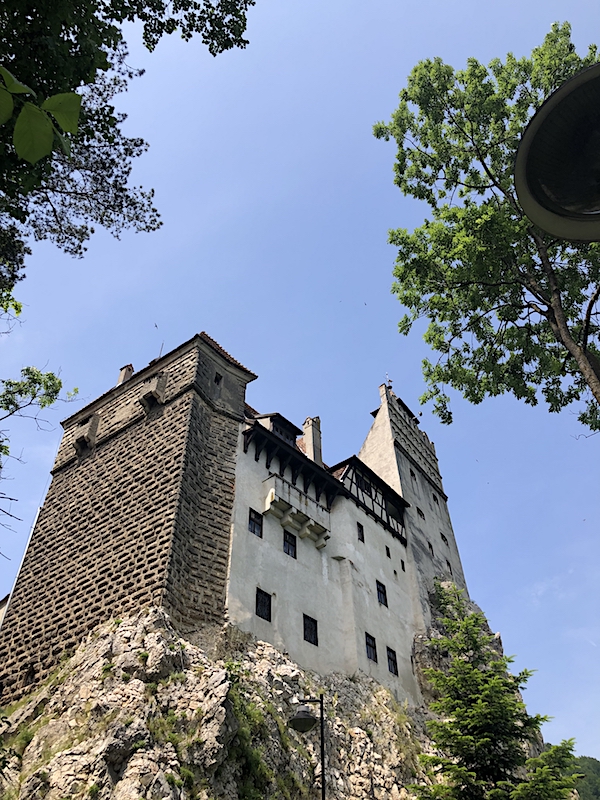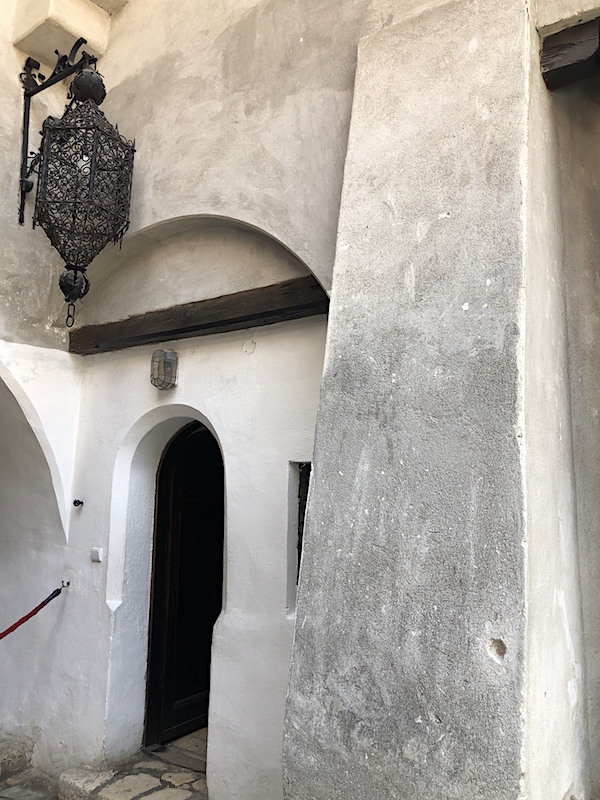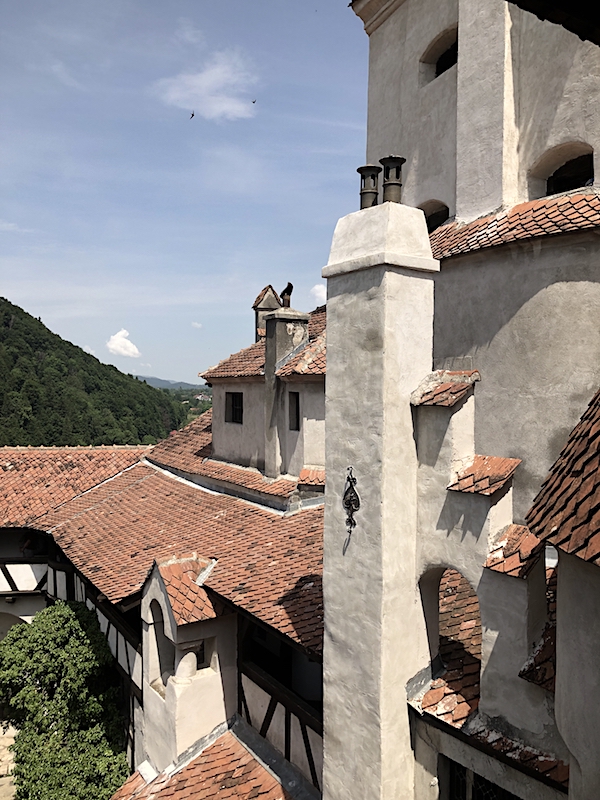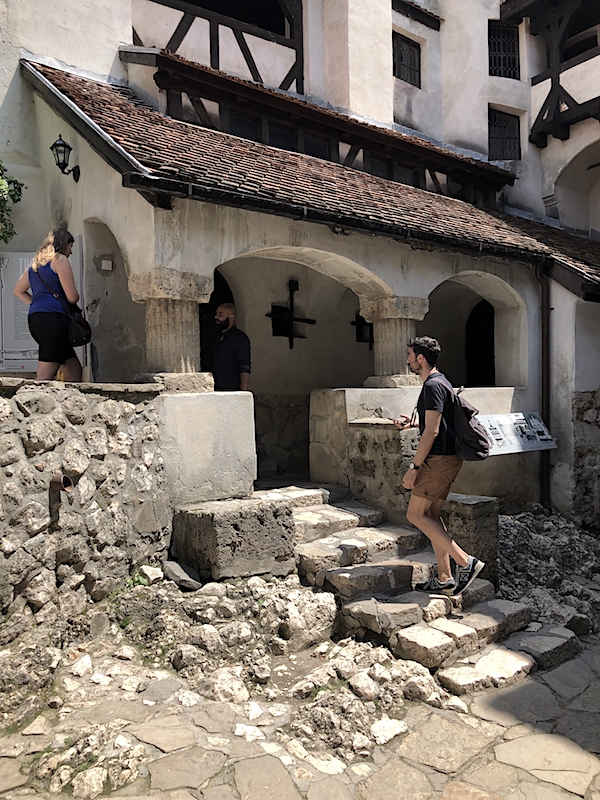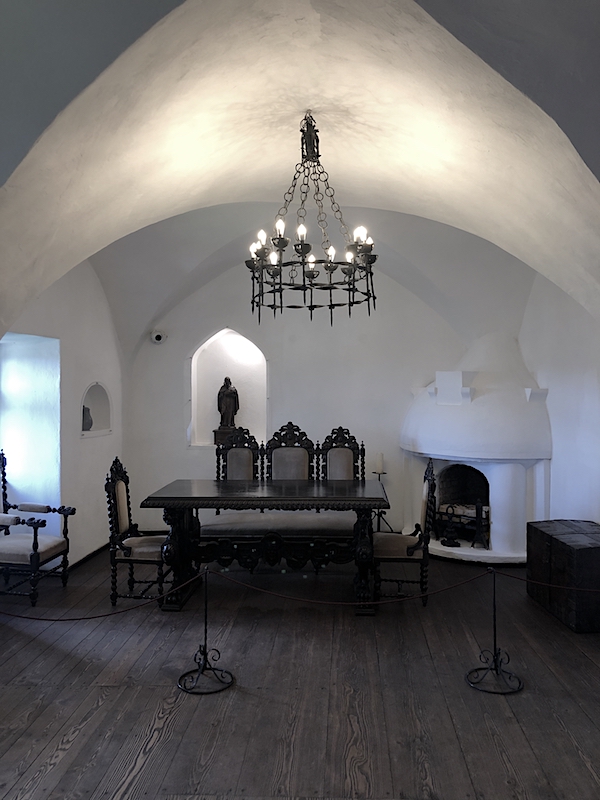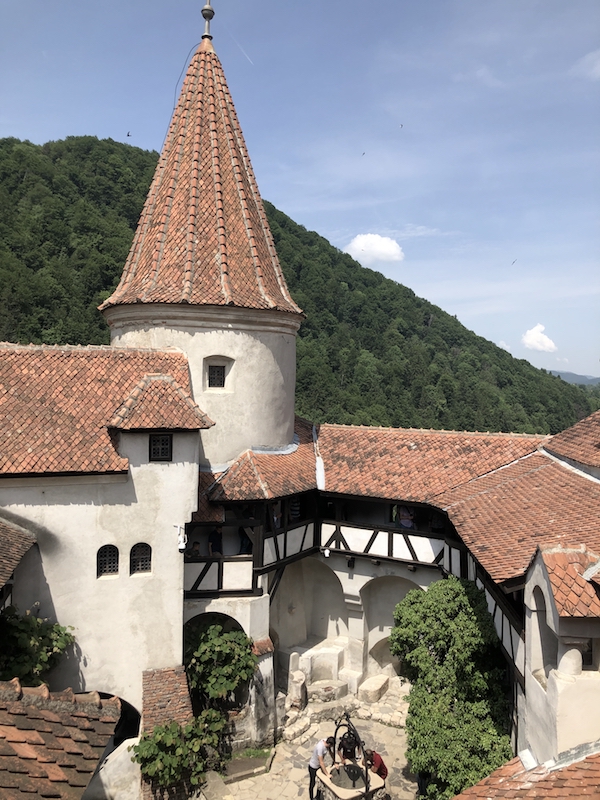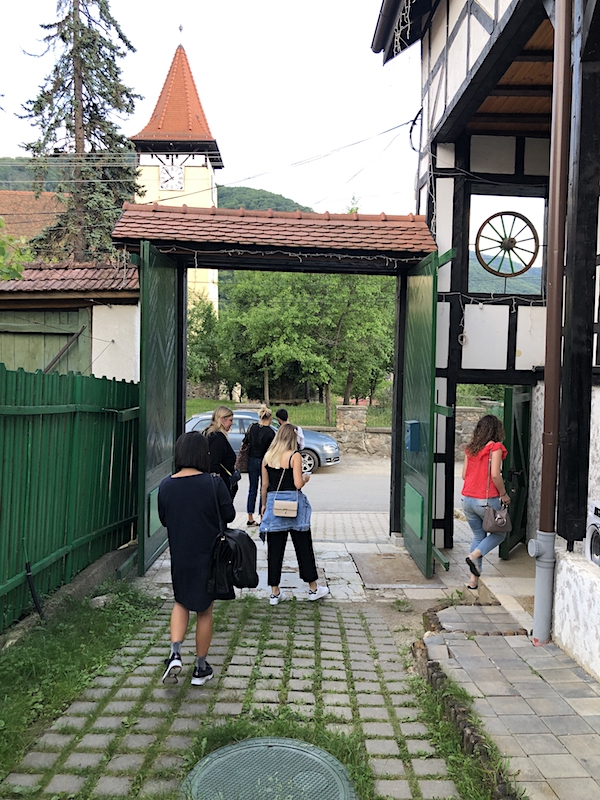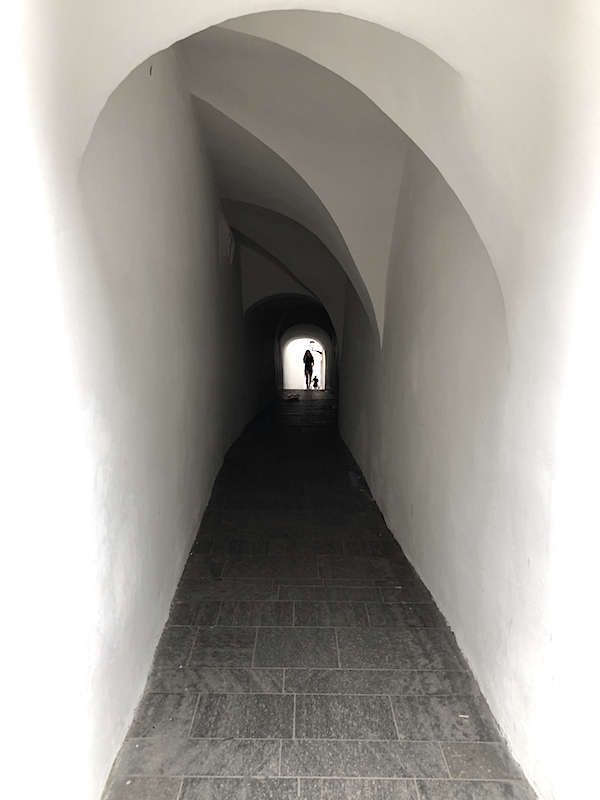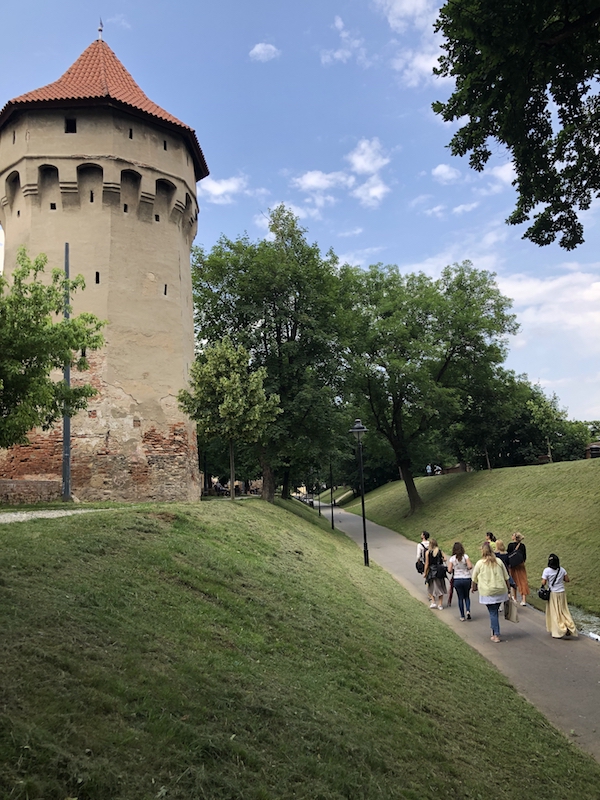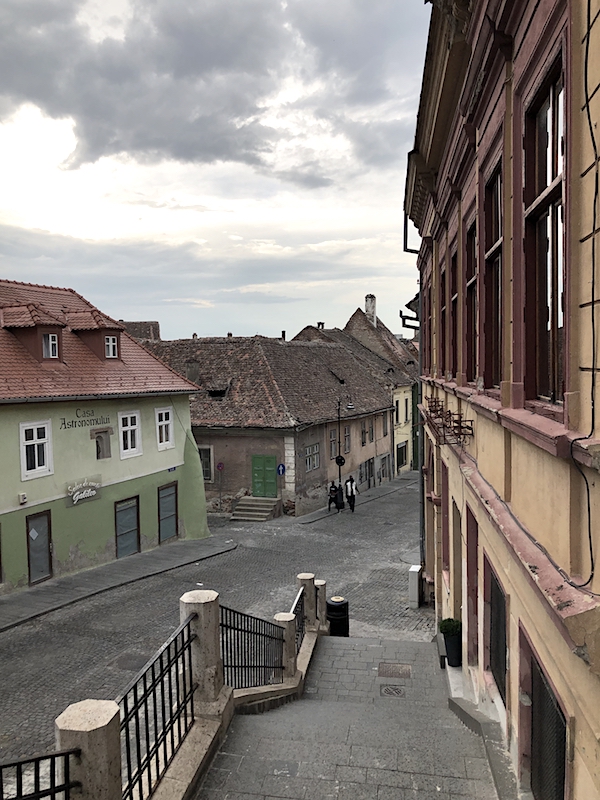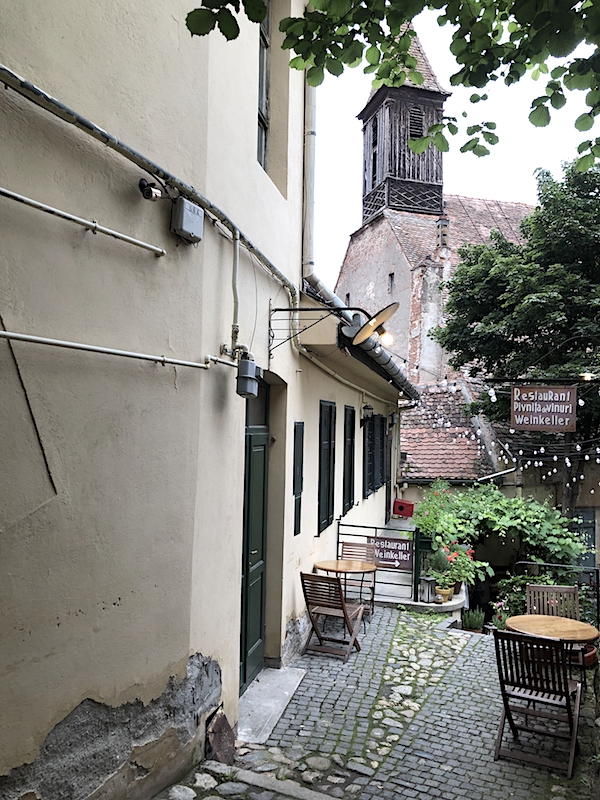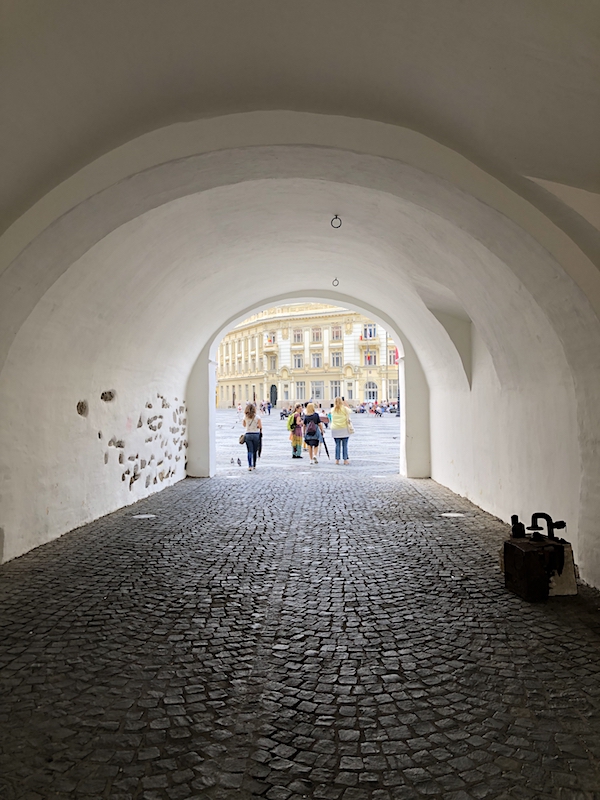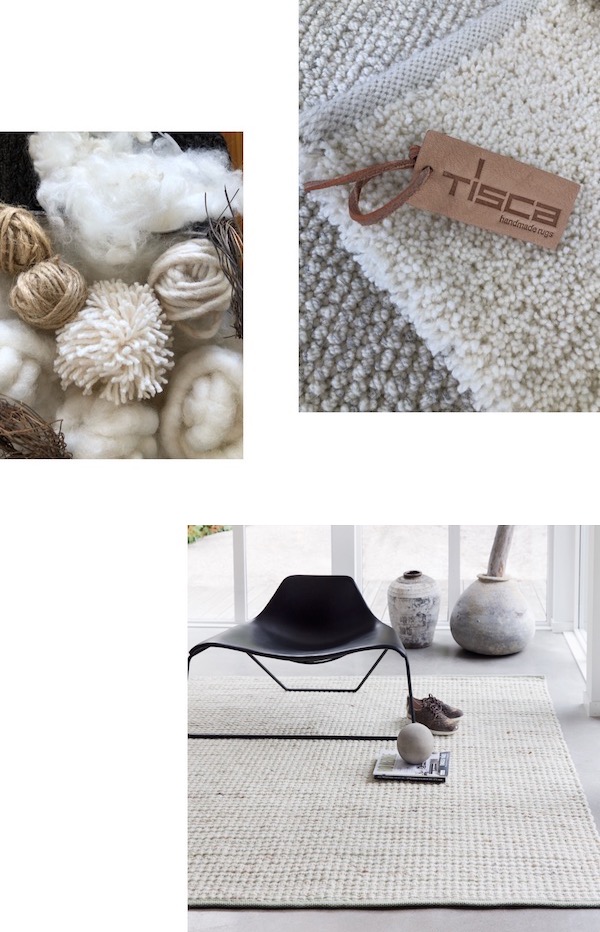
Travelling to Transylvania with Tisca rugs

Travelling is something I really enjoy and I feel blessed to have the opportunity to travel to different destinations thanks to my blog and you, my readers! My latest collaboration brought me to the heart of Transylvania, yes the country of Dracula, but more about him later. Despite being a fan of Vampire stories, Transylvania never had been on my radar, until I met the team behind Tisca two years ago.
As you might know I have been working on the Domotex fair the last two years, where together with a team of international bloggers I covered the fair and took part in our panel talks. One of the brands that really stood out both years, was Tisca, well known for their beautiful hand-woven rugs. We all love the brand and were really happy to be invited to discover their story in Transylvania.
Tisca rugs are made in the district of Cisnădie, a town near Sibiu. I was so impressed by the beautiful green landscape when flying over our destination, you might have followed me on stories, you can still find a picture in the highlights of the landscape. The first evening we spent tasting local specialities, I loved the small hotel and the village we were at. So different from all the fancy hotels and city life we mostly see during these kind of trips. I made lots of pictures, both for the blog and to share in my stories and I hope you enjoy my impression of the factory and our days in Transylvania on the blog today.
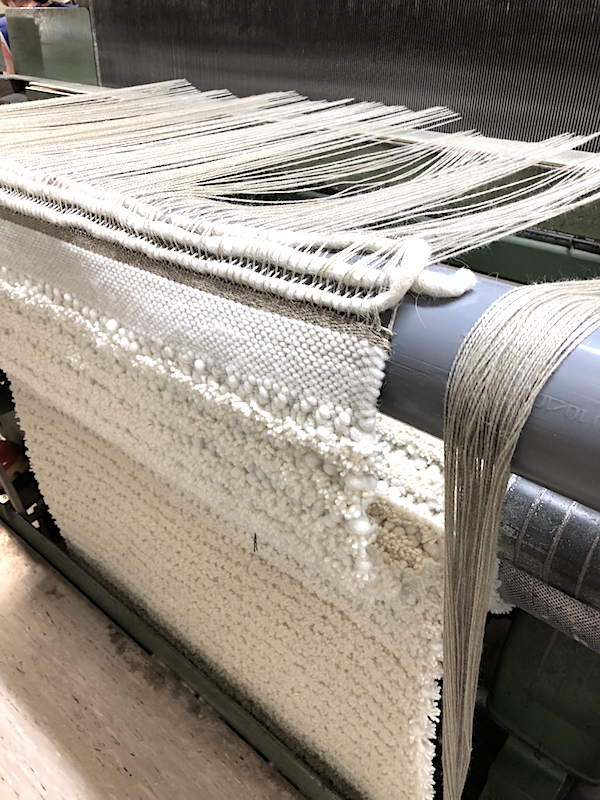
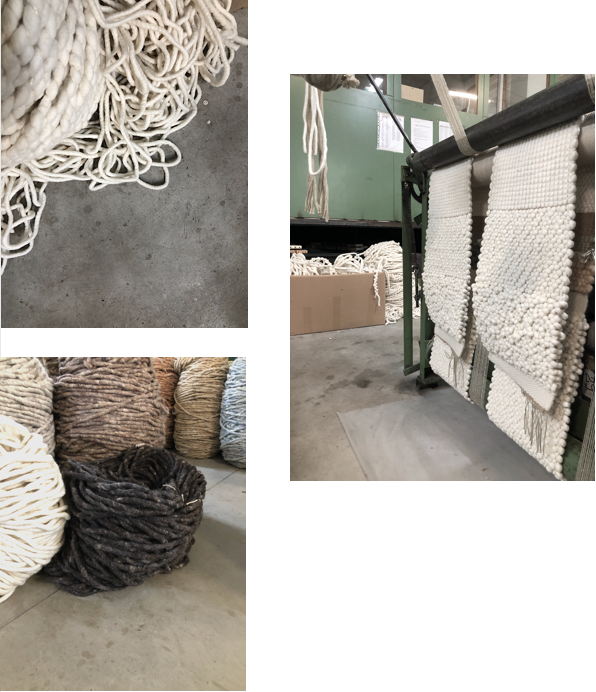
Visiting the factory
The next day we visited the 10.000 square factory where we learned a lot about the different collections…. I must say the traditional rugs of the Olbia collection in different shades of white and structures are my personal favourite, but believe me if I tell you there is a carpet for every taste and you can even design your own!
We met some of the 150 members of staff, during a tour along the process of manufacturing the Tisca rugs. We saw huge piles of wool all from different parts of the world, such as New Zealand, Sardinia and Iceland to name a few. had a look into the selection of different wools, Tisca spins almost all of its yarns itself in different levels of thickness. In addition to wool linen, jute, sisal, cotton, mohair and synthetic fibres are used.
Walking through the factory we followed the different processes and saw the mixing, spinning, dying techniques and washing, and got in touch with the different people in each section. I loved how they were all patient to explain and show us their work and most of all touched by their happy faces and to see how proud they all were to be part of their contribution in the process of every rug. ‘Tisca rugs made with hand and heart’ is the slogan of the company and I can only agree after visiting the work floor and meeting all the lovely people.
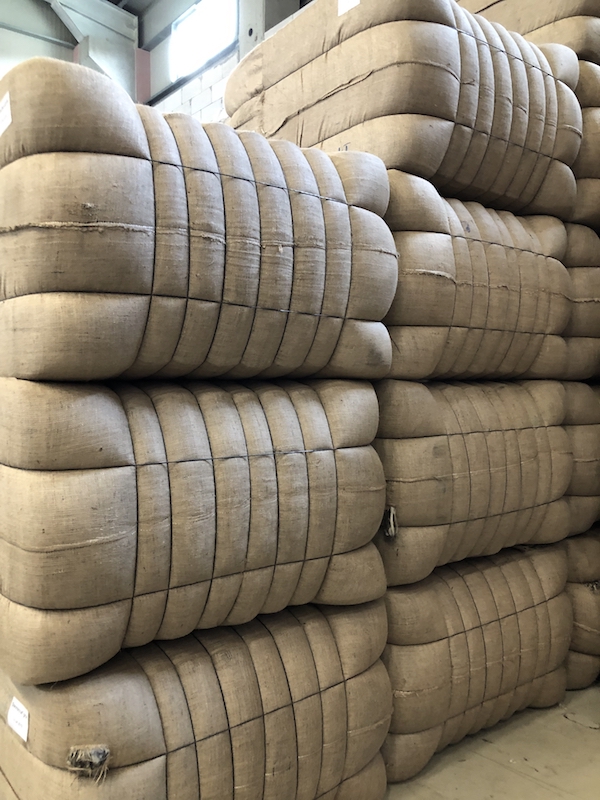
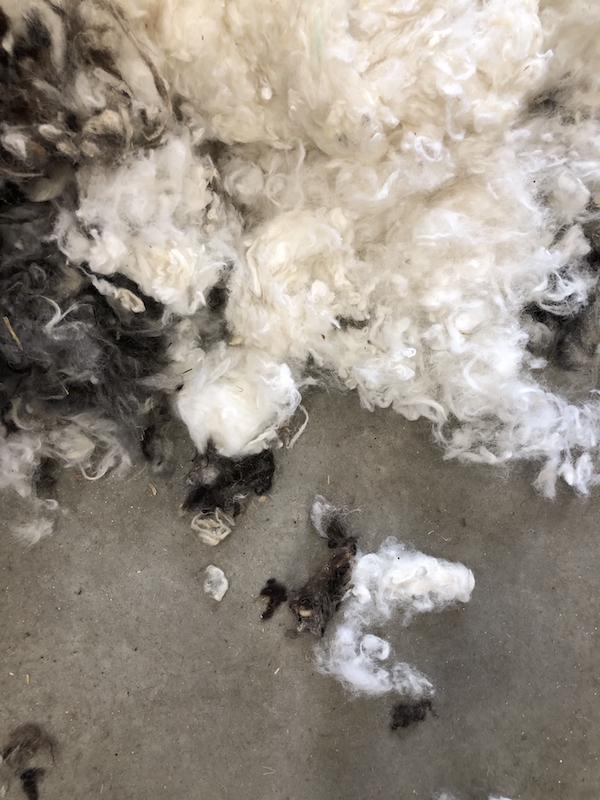
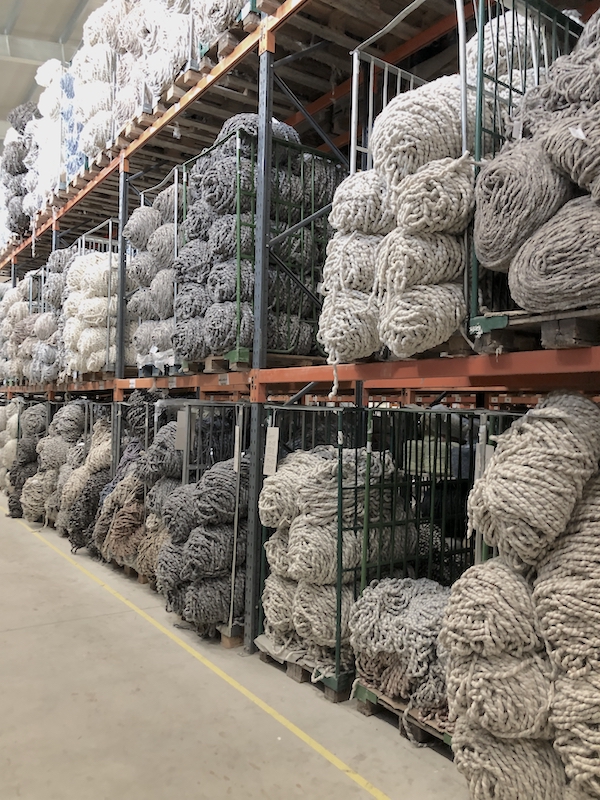
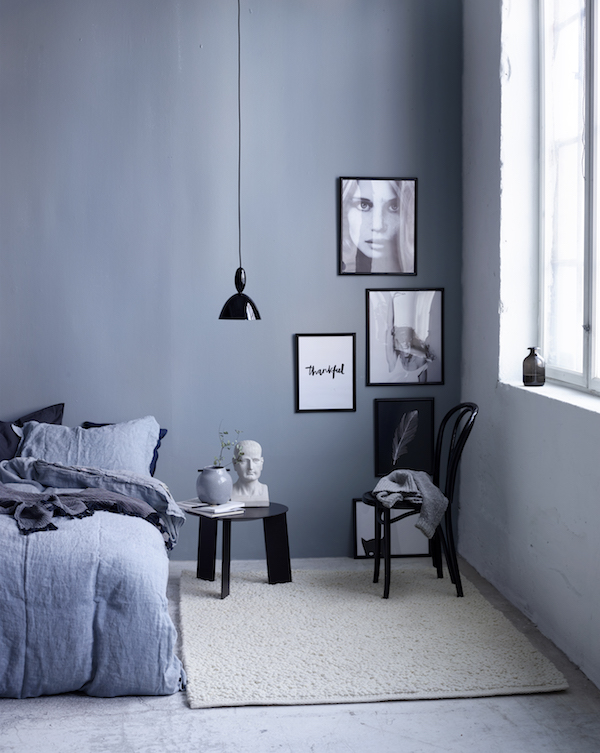
GOTS, Global Organic Textile Standards
Before heading to the actual weaving plant, where we got to see the different weaving techniques and the actual production of each rug, and not to forget weave our own small rug. We visited a special department of the manufactory. Here the ‘Respect’ collection of rugs from Tisca is weaved that fulfils the requirement of GOTS, according to which the environmental requirements of the entire production chain and the social criteria with which compliance is required are defined at an exacting level.
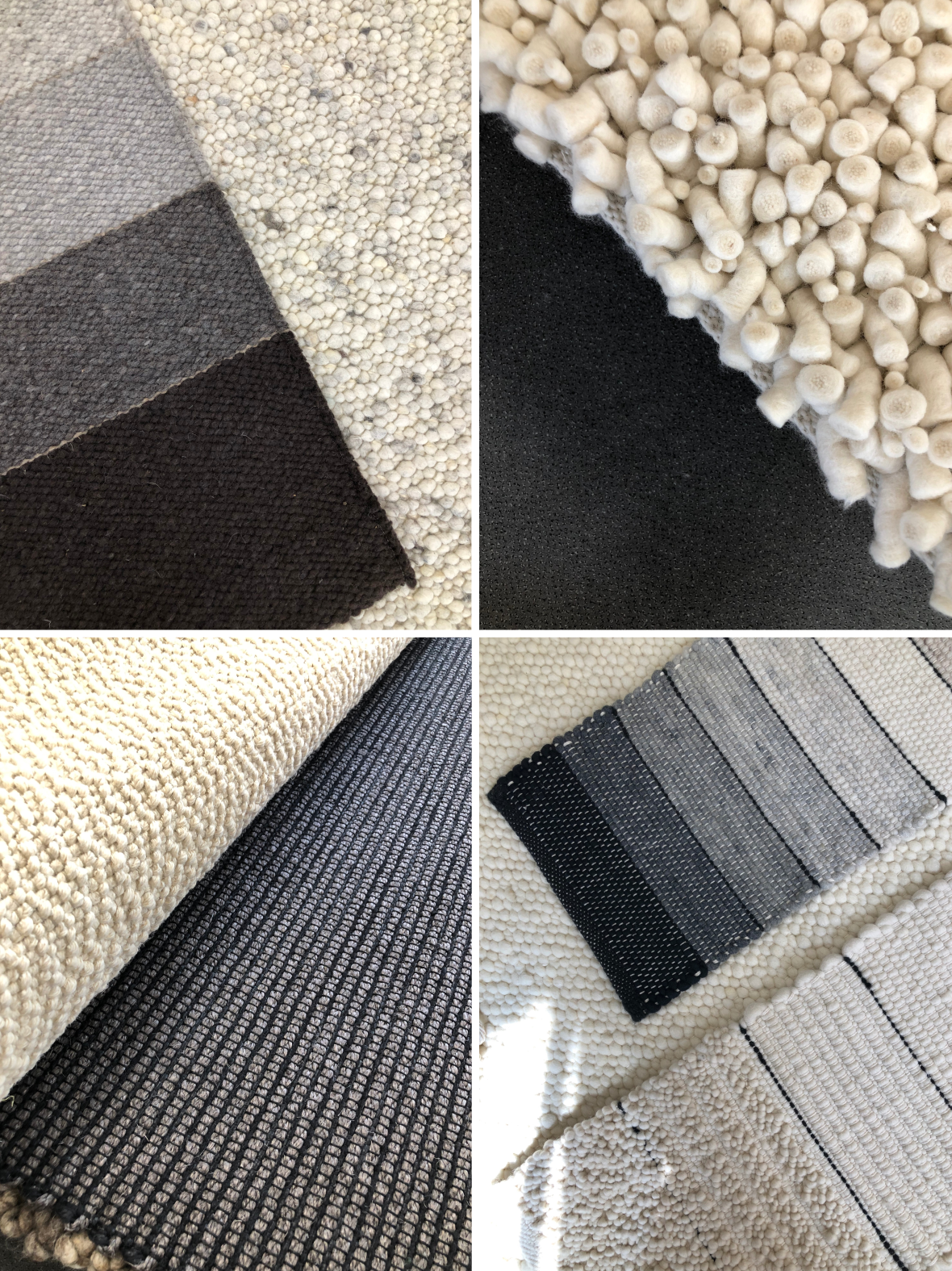
Weaving techniques and textures
We also got the opportunity to weave a small rug ourselves and experienced that weaving is a real skill that the local people gained over the years and patience is needed to make the many different and unique rugs.
Roughly there are two different techniques for manufacturing a Tisca rugs and I have to quote the Tisca team here: “Tisca rugs are either woven or braided. With braided rugs, the seamstresses make the twines of yarn into plaits, before joining them in a spiral form working from the centre outwards to create a rug.”
“With the handwoven rugs in Transylvania, the classic plain weave approach is used. This technique allows for two-sided use with both flat-woven rugs and pile rugs. The most varied collection available from Tisca, the Olbia collection, also consists of woven wool rugs. The collection has 26 different textures from classic flat-woven single colours to exciting textural landscapes and modern design.”

Seven other facts about Tisca textil GmbH you should know
- Tisca textil GmbH is one of the top addresses for almost 50 years when it comes to handmade rugs from high-quality wool.
- With 96 colours, a variety of yarn thicknesses and 26 possible textures a never ending variety of rugs can be designed when combined.
- Tisca rugs are woven in linen weave and therefore equally beautiful on both sides and can be reversed as often as you like.
- Tisca is the only manufacturer that offers the ability to manufacture the complete collection in widths up to 6 & 8 metres and in any length!
- This makes Tisca the only possible provider when it comes to the entrance hall of a luxury hotel or the rooms in a palace for example.
- Tisca does not throw away any leftover yarn and maintains two small workshops near Cisnădie in Bogatu Roman where women make high quality rugs out of the waste yarn which arises during the weaving process in the main plant.
- The social Bogatu project is run by the women themselves, they stay independent and their rugs are of excellent quality, affordable and very popular.
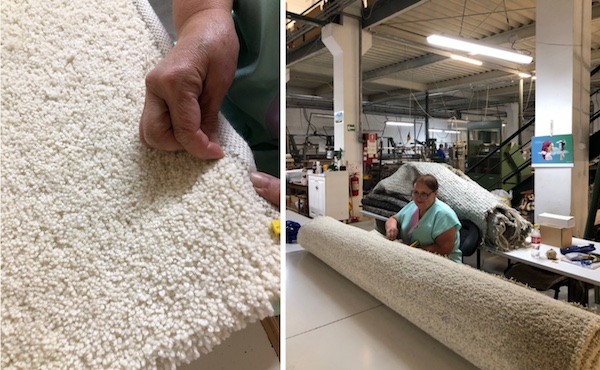
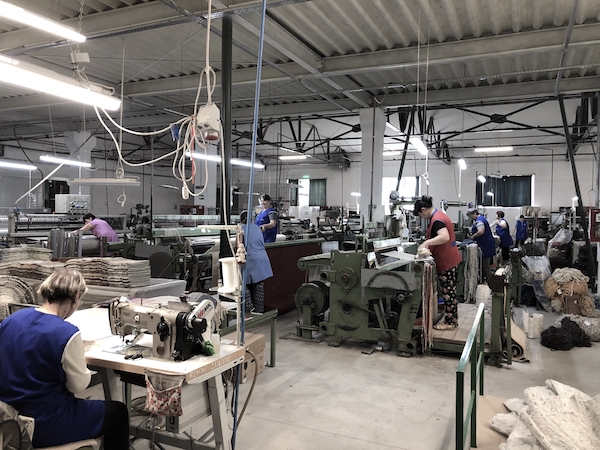
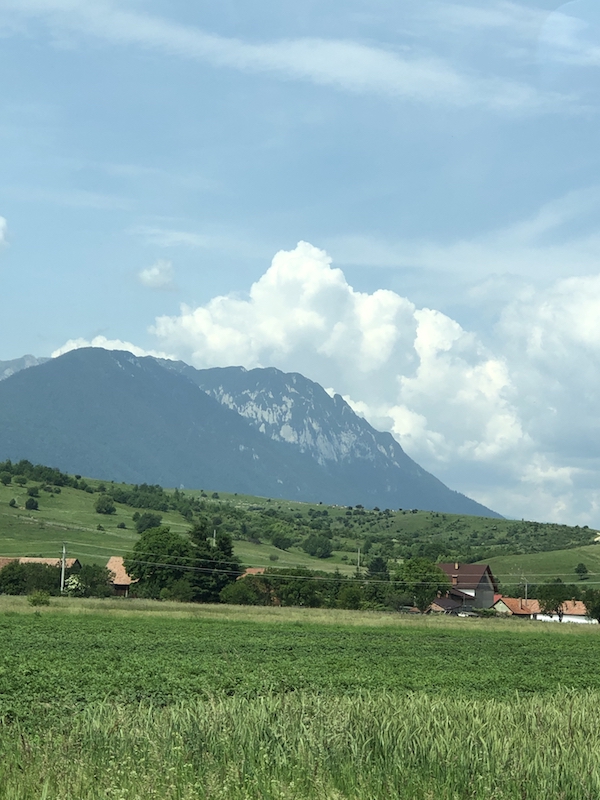
Transylvanian hospitality
I really enjoyed our Transylvanian adventure, from meeting the team, seeing the different collections and the weaving process to making our own rug and having lunch with homemade specialties at the garden of one of the Tisca team colleagues in Cisnădie. We also got the chance to visit Sibiu, where a local guide told us more about the rich history of the very old town.
On the last day we made a little road trip and visited the famous Bran castle, which is often erroneously referred to as the home of the title character in Bram Stoker’s Dracula. There is no evidence that Stoker knew anything about this castle, which has only tangential associations with Vlad the Impaler, voivode of Wallachia, the putative inspiration for Dracula.
The castle is now a museum dedicated to displaying art and furniture collected by Queen Marie and although I expected and mayb,e hoped for it to be darker, it was definitely worth visiting as the castle is really beautiful and I loved wandering through the many corridors and rooms.
Thank you so much Andreas, Ines, Karina and all the lovely people we met for a few amazing days. If you want to see more of our trip please visit the blogs of my fellow blogger friends Holly of Decor8, Niki of My Scandinavian home, Agata of Passion Shake, Igor of Happy Interior blog and Mette of Monstercircus
